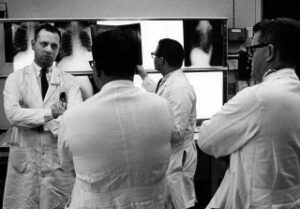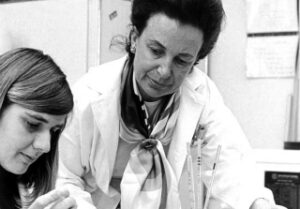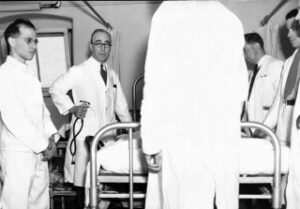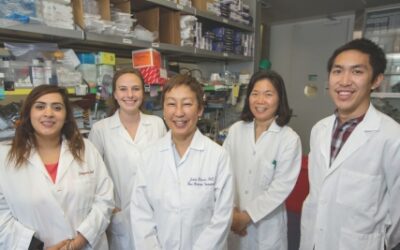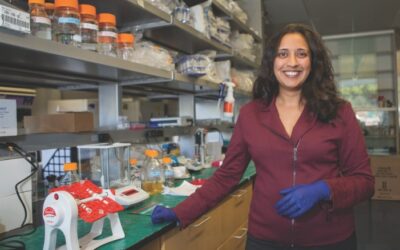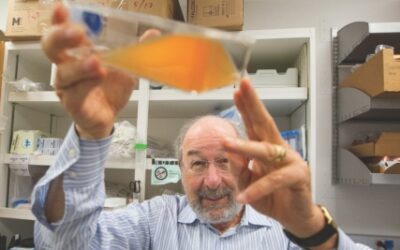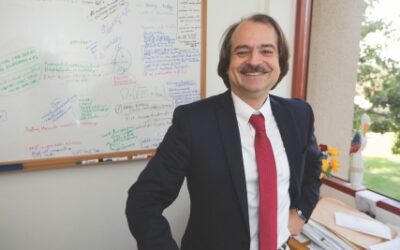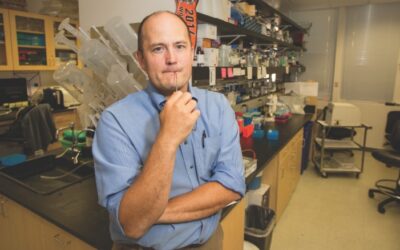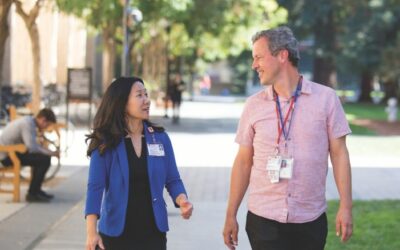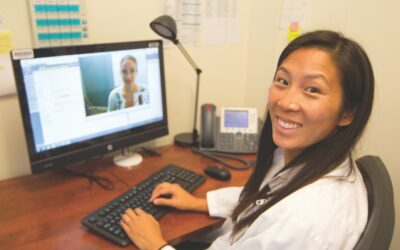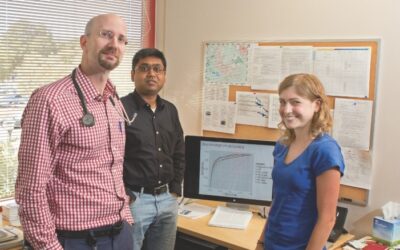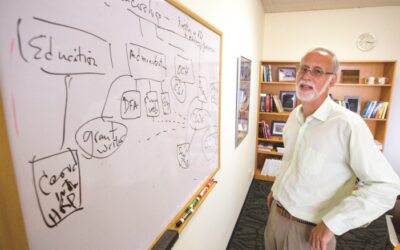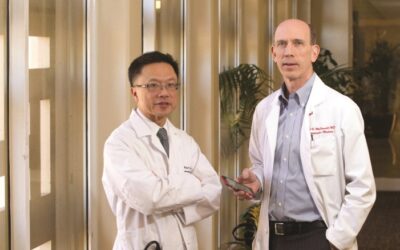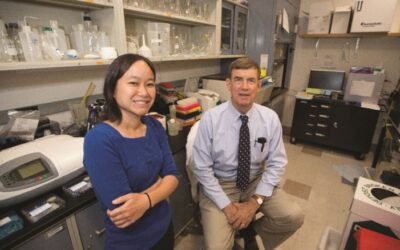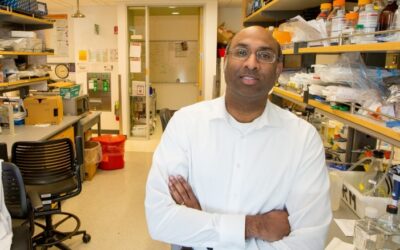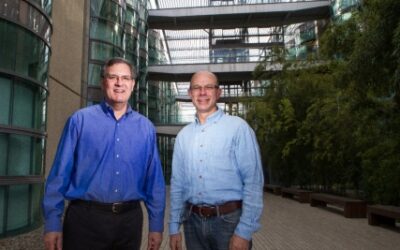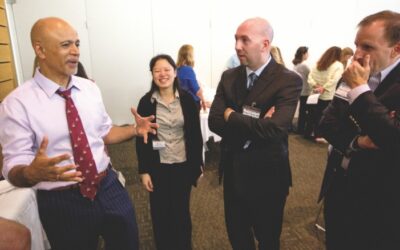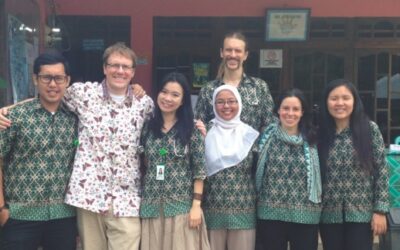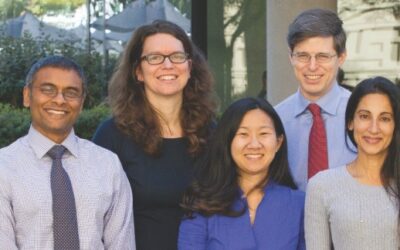
Envisioning the Future, Building on Our Past
2016 Report to Our Community
This publication is neither a yearbook of our recent accomplishments nor an annual report replete with facts and figures. It’s most like an anthology, giving readers glimpses of some recent progress we’ve made as we addressed Stanford Medicine’s tripartite mission: to teach our students and trainees, to do research, and to care for our patients. As we move toward the future, it’s important to reflect on the past, which created the culture of the Stanford Department of Medicine.
Whether you’re new to learning about our Department of Medicine or you’ve been on campus for decades, we hope that you sense the excitement in the department—and mostly in the people—who will drive the missions forward.
Sincerely,
Robert Harrington, MD
Chair, Department of Medicine
Department of Medicine in Numbers
14 Divisions
414 Faculty
(103 University Tenured and Nontenured Line, 101 Medical Center Line, 172 Clinical Educators, 38 Instructors)
29 Endowed Professors
572 Staff & Research Associates
(492 Staff, 80 Research Associates)
396 Trainees
(121 Residents, 131 MD Fellows, 144 Post-docs)
$123.8M Sponsored Research
($81.8 million in federal grants, $42 million in non-federal grants and clinical grants)
405 Grants
(3 Program Projects, 61 R-01s, 39 Ks, 20 Us, 21 Rs (excl R-01) 11 Training, 150 Non-Fed, & 100 Clinical Trials)
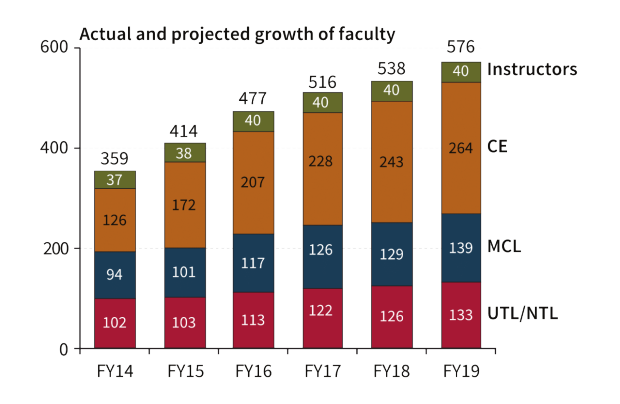
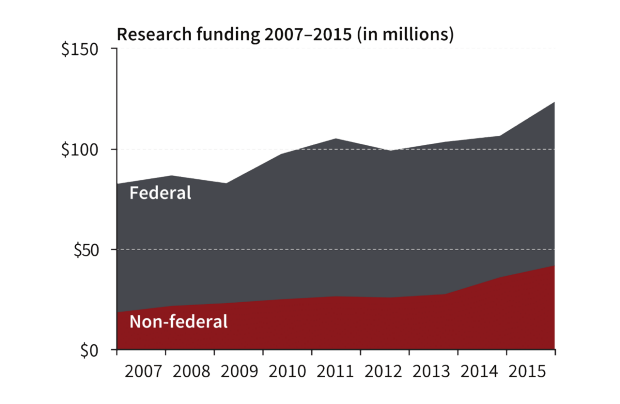
As we move toward the future, it’s important to reflect on the past, which created the culture of the Stanford Department of Medicine.
Thus we start this compendium with Stan Schrier, who was here before some current faculty members were even born. Even today Stan consults in the clinic, mentors residents, and interviews housestaff candidates.
We organized this report to follow the department’s four strategic priorities. Within these domains you’ll meet some of the people and read about some of their activities.
 Invest in Science & Research
Invest in Science & Research
Hugh McDevitt
Responsible for the discovery of immune reponse genes and the first definitive physical map of the Major Histocompatibility Complex (MHC).
Elevate the Culture of Clinical Care
Saul Rosenberg
Started clinical trials for Hodgkin’s disease 53 years ago that would lead to significant improvements in survival.
Connect Science to the Clinical
Judith Graham Pool
Work leads to the discovery of cryoprecipitation allowing for the creation of blood clotting factors.
Educate & Train the Next Generation
Arthur L. Bloomfield
“His best teaching, and it was superb, came at the bedside where it was a memorable privilege and real pleasure to observe Dr. Bloomfield intent at his daily work.”
The recent achievements of the Department of Medicine would not be possible without the work of many past leaders, starting with Ray Lyman Wilbur, MD, the first dean of the Stanford University School of Medicine.
As you read about those who are advancing our field today and into the future, we acknowledge the great progress made here in the not so distant past. So, with a nod to those who built this department, we’ve inserted historic photos in selected locations within this report. We invite you to explore a timeline of notable events in the department as well.
Invest in Science & Research
Topics here range from the development of the human lung to autoimmune diseases, immune responses, and combining immune therapies and targeted therapies to defeat certain cancers; from the role of the tsetse fly in altering the economies of Africa to developing low-cost diagnostic tools for countries lacking them because of economic and environmental reasons; from improving the safety of bone marrow transplantation to searching for bugs that assault the human microbiome and, finally, to WELLness.
Making Bone Marrow Transplantation Safe
Bone marrow transplantation is so dangerous and so toxic that it is reserved for people with life-threatening diseases.
The World Within Us
As a child, Ami Bhatt, MD, PhD (assistant professor, Hematology, and assistant professor, Genetics), found herself drawn to science.
Drug Synergy May Upend Cancer Treatment
For decades, scientists have diligently been working toward new treatments for cancers by pursuing two lines of research.
Applying the Science of Health and Wellbeing
To date, wellness has been difficult to define scientifically because it encompasses all the delicate and exciting experiences that make life worth living.
New Plays to Tackle Inflammation and Infection
It’s a natural—and usually beneficial—response of the human body to react to a wound or pathogens with angry, red swelling.
How a Pesky Parasite Impacts Africa
Marcella Alsan had always wondered why the mineral-rich African continent—with so many natural resources, diverse climates, and arable land—remains so poor.
Painting a New Picture of Lung Development
From the outside, the lungs develop like the roots of a plant; branching airways expand and grow increasingly more intricate, until they’ve filled every space they can with ever smaller passageways to capture oxygen from a breath of air.
Elevate the Culture of Clinical Care
We include articles about important clinical advances that may change the future for patients with familial hypercholesterolemia or metabolic bone disease. The creation of Stanford Health Care-ValleyCare in Pleasanton gave us an opportunity to introduce an academic hospitalist program and integrate our faculty into the community. Two opposite ends of the health care spectrum – primary care and palliative care – are working to keep up with increased demand and the realities of 21st century life.
A Unified Vision for Palliative Care
Just as Stephanie Harman, began medical school, her father-in-law was diagnosed with metastatic lung cancer, unexpectedly sparking her interest in palliative care.
The Future of Primary Care
If recent news headlines are any indication, primary care is at a crossroads. A combination of factors have stressed existing systems.
A Good News Story
It’s not often that a story contains both good news and an asterisk. This article, about patients with life-threatening familial hypercholesterolemia (FH), is one such story.
Merger of Stanford Health Care and ValleyCare Begins with the Start of a New Hospitalist Program
During a time of mergers and acquisitions in all manner of businesses, it should not surprise anyone to learn that Stanford Health Care has joined forces with a nearby community hospital.
The Contemporary Approach to Managing Bone Disease
It’s easy enough to take our bones for granted when everything is working correctly. In the normal course of events our bone tissue turns over regularly, with mature bone being replaced by new bone.
Connect Science to the Clinical
Work that connects science to the clinic includes the new Center for Population Health Sciences and a challenging new minimally invasive surgery for early gastric cancers. There is a smartphone app that promises to improve heart health for individual patients who contribute their data to a large-scale study, and there is an improved way for biomedical scientists to write metadata to help others understand their methods and replicate their experiments. The search for toxins that plague kidney dialysis patients has already resulted in a clinical trial, and a new therapy developed for AML created a biotech start-up within the walls of Stanford.
Birthing the Center for Population Health Sciences
We are told to beware of moving parts, and those of us who value our digits and appendages wisely stay out of the way.
An App to Improve Heart Health
In March, Stanford cardiologists launched MyHeart Counts—a new mobile app that enables users to contribute to a large-scale study of heart health while learning about their own cardiovascular risk.
Endoscopic Submucosal Dissection
Maybe it’s the sushi, or maybe it’s the Korean barbecue, but for some reason stomach cancer is more prevalent in Asia than in the United States.
The Search for Uremic Toxins
Kidney dialysis has not changed much since it was first introduced to a broad public in the 1960s as a miraculous life-saving system to clean the blood when natural kidney function fails.
Defusing Leukemia Killer Cells: From Basic Stem Cell Research to Therapeutic Human Drug Development
Physician-scientists at Stanford are nurturing the equivalent of a biotech start-up, right in the halls of the university, to develop a new therapy for acute myeloid leukemia, a rapidly fatal cancer of the blood and bone marrow.
Reducing the Pain of Writing Metadata
Over the past four or five decades, scientific journals have tended to limit article length, especially the methods.
Educate & Train the Next Generation
Nothing that we do at the bench or in the clinic will matter if we don’t bring along a new generation of scientists to take up where we leave off. Read about global health opportunities for our residents and the creation of new pathways that match residents’ clinical, research, or education interests. The desire among residents for early exposure to hospitalist medicine resulted in a new curriculum, and the first-ever Stanford 25 Skills Symposium drew an international audience interested in getting back to bedside medicine in the era of the laptop.
Residents Create a New Curriculum for Future Hospitalists
Hospital medicine, whose practitioners are known as hospitalists, is a popular career choice for Stanford residents in internal medicine and also has been the fastest growing specialty across the country over the past eight years.
Inaugural Stanford Medicine 25 Skills Symposium
On his first day as an attending physician at Stanford, Abraham Verghese, MD, noticed something unusual. “I was struck by the fact that the house staff were spending a great deal of time wedded to their computers,” he recalled.
Expanding Global Health Opportunities for Medicine Residents
In the last five years, the Department of Medicine has made global health education a priority by implementing a number of programs dedicated to reducing health disparities and strengthening human capital.
Mentoring Residents
The latest class of internal medicine residents—50 of them—arrived on the Stanford campus at the end of June. They had just completed four rigorous years of medical school, and they were looking forward to the next phase of their careers.

